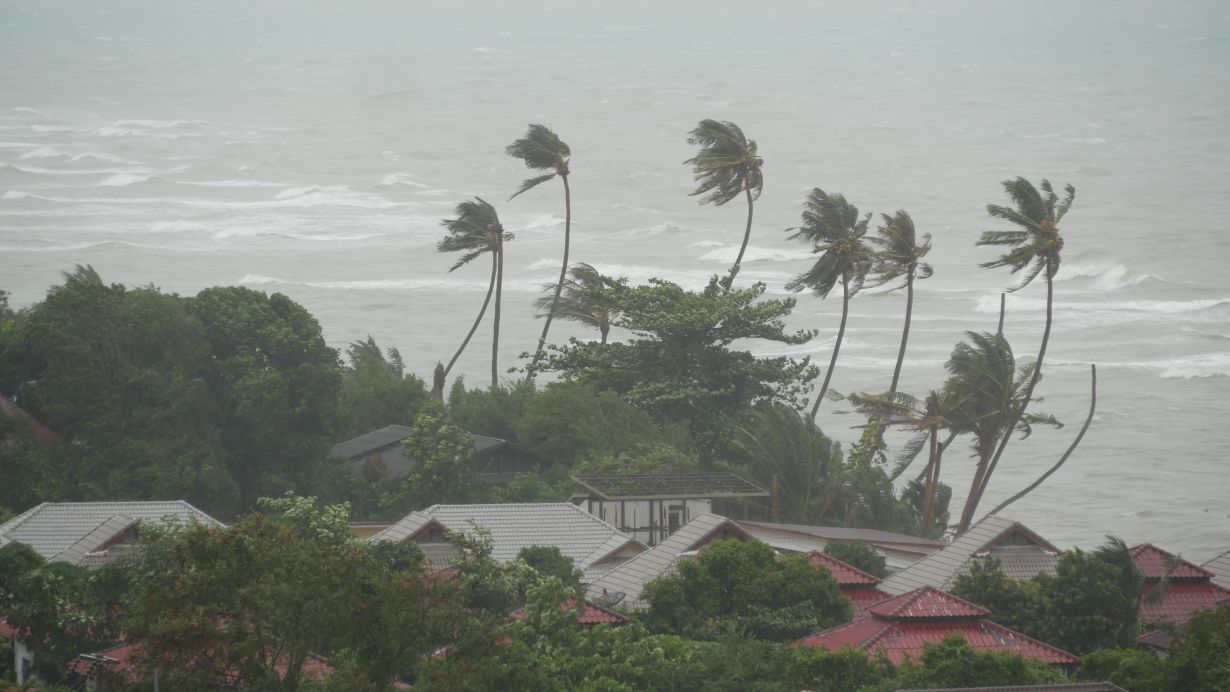
The consequences of the climate crisis particularly affect small developing countries - not least financially. Researchers of Karlsruhe Institute of Technology (KIT), RiskLayer GmbH - a startup of KIT -, and the University of Cambridge have now developed a strategy to protect these nations against the high costs of climate-induced disasters. They want public-private partnerships to play a central role in the support of the countries affected. The official launch of the report from the team was made on Monday, December 4, 2023 at the UN Climate Conference 2023 (COP28) in Dubai and has, and will continue to be presented in various forums and high-level meetings from the 30th November-12th December.
In their report coordinated by the University of Cambridge, the researchers concentrate on the small island developing states of Fiji, Kiribati, Marshall Islands, Palau, Samoa, Tuvalu, Vanuatu, Maldives, Barbados, Grenada, and St. Lucia. While their geographical and economic circumstances differ largely, these nations all are highly susceptible to climate risks, such as floodings, droughts, storm tides, rising sea levels, bushfires, and hurricanes. This acute danger is reflected by annual per-capita costs of climate-caused disasters, which are among the highest in the world.
"To plausibly estimate the climate risk for these countries, we used the world's biggest database on catastrophes, CATDAT, as well as new techniques to model current and future risk scenarios," says Dr. James Daniell from the KIT Center for Disaster Management and Risk Reduction Technology CEDIM and RiskLayer GmbH. "In single years, these nations might lose an equivalent ranging between 50 and more than 100 percent of their gross domestic product as a result of hurricanes or droughts." The already very high annual costs of climate-caused disasters will presumably increase by ten to 15 percent by 2050.
Insurance Fund to Mitigate Financial Consequences of Events Caused by Climate Change
The solution sketched by the international team extends beyond a general loss and damage fund. The researchers propose to limit the annual economic losses of the states to 10 percent of their gross domestic product by an umbrella stop-loss mechanism. Wealthy people and companies with annual profits of more than ten million dollars could play a key role in this system. "Their contributions and those of public donors and other countries can flow into an insurance fund to mitigate the financial consequences of disasters caused by climate change," Daniell says. "In combination with other, engineering, technological and local measures, the ongoing torrential downpour of economic climate impacts on these countries could become a series of showers in the coming years. Such an umbrella would be a real help for them." The funds required may come from risk capital markets. "Supply of billions of dollars from risk capital markets via premiums is based on exactly the same principle that is used by most of us for their home insurance," explains Rowan Douglas from the Howden Group, CEO Climate Risk and Resilience and co-author of the report. "When many people pay relatively low annual premiums and share these payments, vast resources will be created and then available to countries hit by a catastrophe."
"In the run-up to COP28, it is important to remember that public-private partnerships can help people threatened most by the impacts of climate change," Daniell says. "Our up-to-date risk modeling reveals that these economies - with the corresponding help - would remain insured against climate catastrophes by 2050 in spite of the increasing risks and would recover more quickly from the damage caused by such events." The fund represents one of the only current practical tools for spending the "Loss and Damage Fund" set up during COP27 and COP28 efficiently.
Original Publication
Ana Gonzalez Pelaez, James Daniell, Rowan Douglas, Charles Langdale, Adarsh Narayanan Krishnan: Risk Sharing for Loss and Damage: Scaling up Protection for the Global South. Cambridge Institute for Sustainability Leadership (CISL), 2023.
Further Information:
More about the KIT Climate and Environment Center
Being "The Research University in the Helmholtz Association", KIT creates and imparts knowledge for the society and the environment. It is the objective to make significant contributions to the global challenges in the fields of energy, mobility, and information. For this, about 9,800 employees cooperate in a broad range of disciplines in natural sciences, engineering sciences, economics, and the humanities and social sciences. KIT prepares its 22,300 students for responsible tasks in society, industry, and science by offering research-based study programs. Innovation efforts at KIT build a bridge between important scientific findings and their application for the benefit of society, economic prosperity, and the preservation of our natural basis of life. KIT is one of the German universities of excellence.






